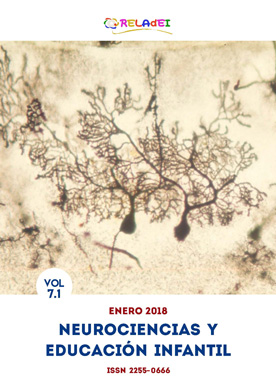Implicit bioeducational. Emotions and cognition
Main Article Content
Vol. 7 No. 1 (2018): Neurociencias y educación infantil, Monográfico. Introducción, pages 42-51
Submitted: Jul 6, 2018
Published: Jul 13, 2018
Abstract
Cultural evolution and biological evolution can run, even opposing, along a parallel way. Environmental situations affect learning processes of the human species – the genetic potential and the biological plasticity – by modifying and stimulating them through education. The opportunity to process information in the environmental interaction may flow to individuals from an adaptive potential, developed at phylogenetic level, which involves explicit and implicit processes in both cognitive and emotional areas. Explicit and implicit knowledge recognizes central conceptual structures of domain general nature yet related to individual experience. Teaching with implicity intended as a conceptual structure implies adopting teaching models that aim to strengthen core knowledge. Bioeducational teaching theory is oriented towards the activation of basic conceptual structures. The cerebral organization is regulated by neuro-developmental variables and socio-cultural forms. In bioeducational perspective, the open relationship between biological basis of learning and cultural development is holistically achieved. The role of emotions, in particular, is interpreted in more and more organic and multidisciplinary ways. Managing emotions is connected with an effective development of social and cognitive skills, thus affecting social and cultural life of individuals. Education for emotions management combines the role of biological, cultural, and psycho-social functions showing by this synthesis both the subjective and the social dimension of the individual, both the explicit and implicit context.
Keywords:
Neuroscience, Emotion, Cognition Neurociencia, Emoción, Cognición Neuroscienze, Emozioni, Cognizione
Downloads
Download data is not yet available.

